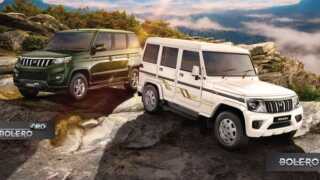Follow us today…
When Ford unveiled the F-150 Lightning, it prompted a question from many traditional truck owners: could the quintessential American workhorse survive a reinvention powered by electricity?
One owner, Tbowd, answered with a resounding yes, backed by a 4,536-mile journey that wove through the raw heart of the Pacific Northwest, the alpine folds of British Columbia, and the wide-open quiet of Montana and Wyoming.
The Lightning made it, kids and camping gear in tow, and the account he shared on r/F150Lightning got some very interesting replies.
“Overall stats: 4,536 miles, 4 weeks, average 2.0 m/kwh, ~25 fast charger stops
One of my initial concerns when purchasing this vehicle was whether it would be practical for long road trips, but after putting it to the test, I can confidently say it’s been an incredible road trip vehicle… as long as you plan ahead.
We just wrapped up a month-long adventure as a family of five, exploring some of the beautiful national parks across the Pacific Northwest, British Columbia, Alberta, and Montana/Wyoming before heading home. The vehicle performed flawlessly on and off road, and the availability of fast, dependable charging infrastructure made all the difference. The charging stops were welcome breaks (3 young kids), and we often timed them with meals. We rarely felt we were “waiting around” for the truck to charge.
The real secret sauce was finding places to stay, a hotel or a campsite, that allowed us to charge overnight. Even when we didn’t, a fast charger was always within reach. That said, I do not think I would attempt this trip with an SR. We went off route quite a bit to explore, and it was nice having the ER buffer to do so without any range anxiety. The ER also allowed us to drive at the less efficient speed limits (80 mph) without worrying about the efficiency hit.
Bluecruise functionality was hit or miss. It performed great in the stretch from California up through Canada, but struggled to operate smoothly in Montana and Wyoming. Not sure why.
We picked up a starlink mini before the trip so that we could have service in some of the more remote drives. It fit great on the lighting’s dashboard and worked great! Nice to be able to stream a movie for the kids on the longer drives and be able to have continuous access to charging locations via the various apps.
We used ABRP to plan the route, PlugShare to check the current status of chargers ahead of time, and Google Maps for real-time traffic/road closure information.
We built out a temporary bed/storage in the back for the trip so that we could have a comfortable spot to hang out. Cut some 2x12s and plywood to create a simple structure that we could easily slide storage bins under and put a mattress on top. Way cheaper than the prefab options out there. Looking at you, Decked.
Overall, I’m incredibly happy with both the vehicle’s performance and how seamlessly it supported our trip! To have the full utility of the frunk/truck with the efficiency of an EV was awesome. This will continue to be our go-to road trip vehicle.”
2023 Ford F-150 Lightning: Battery Options, Range & Charging Specs
- Available with either a 98 kWh standard or 131 kWh extended‑range battery, delivering up to about 240 miles (standard) or 320 miles (extended) EPA‑estimated range.
- Official DC fast charging supports up to 155 kW (175 kW peak in practice); onboard AC charging allows either 11.3 kW or 19.2 kW, depending on charger setup.
- Riding on the Ford T3 platform, it maintains similar length, width, and bed space to ICE F‑150s, though precise numbers vary by trim.
- Wikipedia
- F‑150 is among Ford’s vehicles with the highest recall rates historically, with the F‑150 average projected lifetime recall count around 17.2 issues, above typical median levels.
Rather than strip things down to the bare essentials, the Lightning offered a sort of off-grid luxury. Power outlets throughout the truck meant that cooking, charging devices, and even using a Starlink Mini satellite internet rig became second nature.
Advertising
That level of connectivity was no small thing; streaming kids’ movies while driving down unfamiliar Canadian highways is as modern an American road trip as one could imagine.
Tbowd reported.
“Nice to be able to stream a movie for the kids on the longer drives and be able to have continuous access to charging locations via the various apps.”
The journey averaged a respectable 2.0 miles per kilowatt-hour, solid performance for a full-sized pickup loaded with humans, gear, and ambition.
Tbowd’s Extended Range (ER) battery proved critical. With its higher capacity, the truck could maintain real-world speeds, even 80 mph highway sprints, without the range anxiety that might haunt a Standard Range configuration.
Extended-Range Overlanding with the 2023 F-150 Lightning
“We went off-route quite a bit to explore, and it was nice having the ER buffer to do so…” he said.
That buffer transformed the Lightning from a just-get-there commuter into a proper exploration tool.
The ingenuity didn’t stop at software and speed. Tbowd built a simple sleeping platform out of plywood and 2x12s, enabling quick conversions between cargo hauler and makeshift camper. It was a fatherly move, practical, thoughtful, and just clever enough to sidestep the costly prefab drawer systems saturating the overlanding market. “Looking at you, Decked,” he quipped.
The setup served them well during a surprise late-night arrival when, out of necessity, all five family members slept in the back.
“Worked in a pinch but would not recommend as a nightly plan,” he added.
Of course, no new tech experience comes without quirks. The truck’s BlueCruise driver-assist system, Ford’s big play in the hands-free game, was “hit or miss.” According to Tbowd, it worked great through California and much of Canada, but faltered inexplicably in Montana and Wyoming. That inconsistency raises a quiet red flag: semi-autonomy is only as good as the digital map beneath it. Infrastructure, both virtual and physical, remains uneven, and for now, EV road trippers still need to keep their hands close to the wheel.
Ford F-150 Lightning Frunk Guide: Capacity, Payload & Secure Storage Features
- The Ford F‑150 Lightning features an enlarged front trunk (frunk) with around 14 cubic feet of weather‑sealed storage; the engine means significant space ahead of the cabin.
- It’s capable of holding multiple suitcases, coolers, or gear, and even supports a payload in excess of 400 lb.
- The compartment is drainable and lockable, making it practical for both cargo and secure storage.
- Some owners report real‑world frunk use for heavy items like tools or planks, commending the space’s versatility and capacity.
Charging wasn’t free, but it was predictable. Tbowd calculated his total cost around $740, spread across Tesla ($390), Electrify America ($218), BC Hydro ($100), and other networks. The family charged overnight when they could and broke up driving days with meal-timed stops, turning what might have felt like downtime into refreshingly useful pitstops. It’s not hyperbole to say the charging routine became part of the rhythm of travel, rather than an obstacle to it.
Electric trucks are no longer limited to the Whole Foods parking lot. With the right planning, a little creativity, and a willingness to embrace the road’s changing nature, the 2023 F-150 Lightning becomes more than just viable.
Image Sources: Ford Media Center
Noah Washington is an automotive journalist based in Atlanta, Georgia. He enjoys covering the latest news in the automotive industry and conducting reviews on the latest cars. He has been in the automotive industry since 15 years old and has been featured in prominent automotive news sites. You can reach him on X and LinkedIn for tips and to follow his automotive coverage.
Follow us today…
Source: torquenews.com










